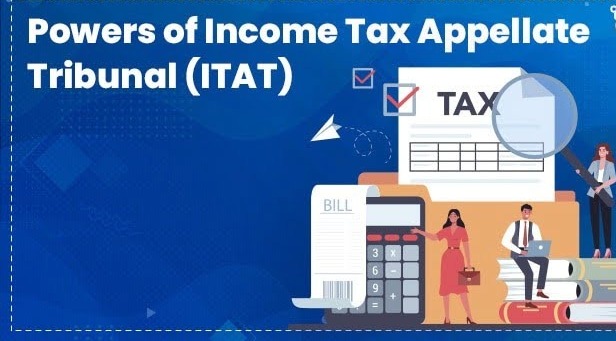K. Kannan, J.@mdashThe following substantial questions of law arise for consideration in the second appeal:-
1. Whether the plaintiff had established his claim to adverse possession to sustain the relief of declaration in respect of the property?
2. Whether the vesting in the property took place automatically by virtue of the East Punjab (Evacuee Administration of Property) Act, 1947 and the subsequent enactments as contended by the defendant by operation of statute without any further act on its part?
3. Whether the plaintiff is in any event entitled to relief of injunction even if the State were to be taken as the owner of the property as a lesser relief?
The second appeal has been filed by the plaintiff whose suit for declaration and injunction was granted in part by allowing a decree for injunction only. The plaintiff preferred an appeal against the portion of the decree that denied to him the right of declaratory relief in C.A. No. 65/13 of 1985 while the Government preferred an appeal in C.A. No. 73/13 of 1985 relating to the relief of injunction that was granted by the trial Court. Both the appeals were heard together and disposed of by a common judgment finding that the plaintiff had not entitled also to the relief of injunction since his possession was only permissive and he cannot maintain action for injunction against the Government which was the owner.
2. The second appeal is brought by the plaintiff against the dismissal of the suit that has resulted by his appeal getting dismissed and the appeal by the State getting allowed by the Appellate Court.
3. The admitted fact is that the plaintiff is in possession of property. The revenue records relating to the property have been filed from the year 1936-37 all of which show that the plaintiff Kartar Singh along with brothers Sher Singh had been in possession of property. The jamabandi entries for the years 1936-37 (P-22), 1940-41 (P-23), 1954-55 (P-25), 1960-61 (P-6), 1965-66 (P-5), 1970-71 (P-3) and 1975-76 (P-2) have been filed, all of which showed the plaintiff to be in possession of property and also containing the entry that it was an evacuee property. While addressing the issue of whether the plaintiff had prescribed title to the property by adverse possession and considering the issue of whether the plaintiff was entitled to declaratory relief, the lower Appellate Court observed that since all the documents contained reference to the property as evacuee property, the plaintiff must be taken as in permissive possession of the property. The Court also examined the issue of how the vesting to the property would take place and had observed that there was a statutory vesting under the East Punjab Evacuees (Administration of Property) Act, 1947 and a property that is vested u/s 4 of 1947 Act would become automatically vested free of any encumbrance u/s 8(2) of the Administration of Evacuee Property Act, 1950. The Court observed, therefore, that there was no requirement of any notification to be issued for a statutory vesting u/s 8(2) and the property being the property of the Government, the relief of injunction against the defendant was not tenable.
4. Learned counsel appearing on behalf of the appellant contends that even if the property was vested under the 1947 Act, the vesting was to take place for the purpose of the exercise of the powers granted under the Act. The scheme of the Act provides for the Government to take possession of the property through the procedure established u/s 6 and a power to carry on enquiry with reference to persons, who had been laying claim over the property which is taken possession of by the State. In this case, since the Government had not taken possession of the property from the plaintiff and had allowed the plaintiff to continue in possession, the vesting did not take place for carrying out any action under the Act. The counsel would argue that Section 7 of the Administration of Evacuee Property Act, 1950 contemplates a vesting only on issuing a notification and since the notification was not shown to have been issued, there have been no vesting at all.
5. In this case, in my view, the lower Appellate Court had correctly considered the issue of vesting of title to the property. The Act of 1947 no doubt makes a vesting of the property in the custodian of all properties for the purpose of the Act till the Provincial Government by notification otherwise directed. The reference to Provincial Government had been removed by the Ordinance of the year 1949 and substituted with delivery which is returned to the owner in accordance with the provisions of Section 12. The vesting made possible the custodian to eject the person in possession of an evacuee property. In this case, there was no attempt by the State to eject the plaintiff in possession and when the Act of 1950 came, the vesting in whatever manner which was made for the purpose of the Act got translated to a vesting in favour of the custodian u/s 8(2) of the Act. Section 8 of 1950 Act, which deals with vesting of evacuee property in the custodian contemplates two different situations. Section 8(1) deals with cases where immediately before the commencement of the Act any property in a State vested as evacuee property in any person exercising the powers of the custodian under any law repealed thereby and the property shall on the commencement of the Act would become an evacuee property. There is no further notification which is contemplated u/s 8(2) and since 1950 Act was a Central enactment dealing with vesting of property in whichever State there existed evacuee property, this provision has to be seen in the context of any one particular State where the property is situate. Since this property is situate in Punjab to which the Estate Punjab Evacuees (Administration of Property) Act, 1947 is applicable, Section 8(2) translates the vesting of the property in the custodian u/s 4 of the 1947 Act to merge with the vesting of the custodian under the 1950 Act. I will, therefore, reject an argument made by the appellant that there had been no vesting of the property with the custodian under the Act since there was no proof of notification. I have observed that no notification was necessary u/s 7 with reference to States where there was any other enactment which made possible the vesting under custodian. In this case, property had become vested in the custodian u/s 4 for carrying out the purpose of the Act that had merged with the vesting u/s 8(2). This answers the substantial question of law No. 2 raised in favour of the State.
6. The issue would still not conclude without deciding on whether the lower Appellate Court was justified in finding that the plaintiff was in permissive occupation of the property. The Court was making such an inference from the fact that the jamabandi entry showed the property to be an evacuee property. The plaintiff had asserted that he had been in possession of the property right from the year 1934 and in reply to these contentions, the Government had stated that the property had been originally owned by Muslims and after the partition of the country, they had migrated to Pakistan and the plaintiff and his brother were gair marusi occupants under the Muslims as per the jamabandi of the year 1940 and they were still in occupation of the property as unauthorized occupants. The specific averment in the written statement was that the plaintiffs had not obtained any permission of the custodian to continue in possession and that their possession was prima facie unauthorized. It is also asserted that the Government was fully competent to eject them by virtue of section 8(4) of the Administration of Evacuee Property Act, 1950. At all times, therefore, the Government was interested in contending that the plaintiff''s possession was unlawful and that he was liable to be ejected. The point, however, is that there had been no ejectment till the suit was filed in the year 1983. Joining issue on a plea of adverse possession made by the plaintiff, the defendant would contend that the plaintiff could not claim ownership over the property by adverse possession as his possession was gair maursi, he had never surrendered possession to the State and re-entered the property. If the plaintiff''s possession was gair marusi, as entered into the books, then it would be seen that what was vested in the custodian was the right of reversion that existed in the original landlords who were Muslims that had fled to Pakistan. The position stated in the written statement brings out the law succinctly that a tenant, who enters possession of property by continuing in possession of property for any length of time does not make his possession adverse to the landlord unless there is a surrender of possession to the landlord and there is a re-entry. In this case, when the property became vested in the Government by the statute, whatever remained to the original owners must be taken as having vested with the Government as well. A person, who continued as gair marusi cannot claim a title adverse to the landlord or at best his own adverse interest must be in a status as such gair marusi. I would, therefore, decline the relief of title to the property by adverse possession as the trial Court had held and find that the plaintiff could not be said to have prescribed title to the property by adverse possession. There is an estoppel in law by virtue of Section 116 of the Indian Evidence Act from setting up title adverse to the actual owner. Ownership of the property in the State operates by law and therefore, the plaintiff''s possession though may be for a period whatever be the length of time cannot constitute adverse possession. This answers the substantial question of law No. 1 raised against the plaintiff-appellant.
7. I have already held that the Government could have taken steps to take possession of the property from the plaintiff but it cannot characterize the plaintiff as an unauthorized occupant. It cannot also contend a position that the plaintiff''s possession was permissive. Though it is privilege of the defendant to take up inconsistent stand, it cannot be such as one plea could annihilate the other. If the plaintiff''s claim to adverse possession is sought to be warded off by characterizing this possession as gair marusi, he cannot be stated to be in unauthorized occupation although a specific document of lease is not obtained by the plaintiff. The plaintiff would obtain a prescriptive right to continue as such tenant and he cannot be ejected otherwise than in the process known to law.
8. The principle that a person cannot maintain action for injunction against the principal owner admits of certain known exceptions. A person who is in settled possession of the property whose possession is admitted for over a long number of years cannot be ejected even by the full owner of the property. This issue has been considered by the Supreme Court in

